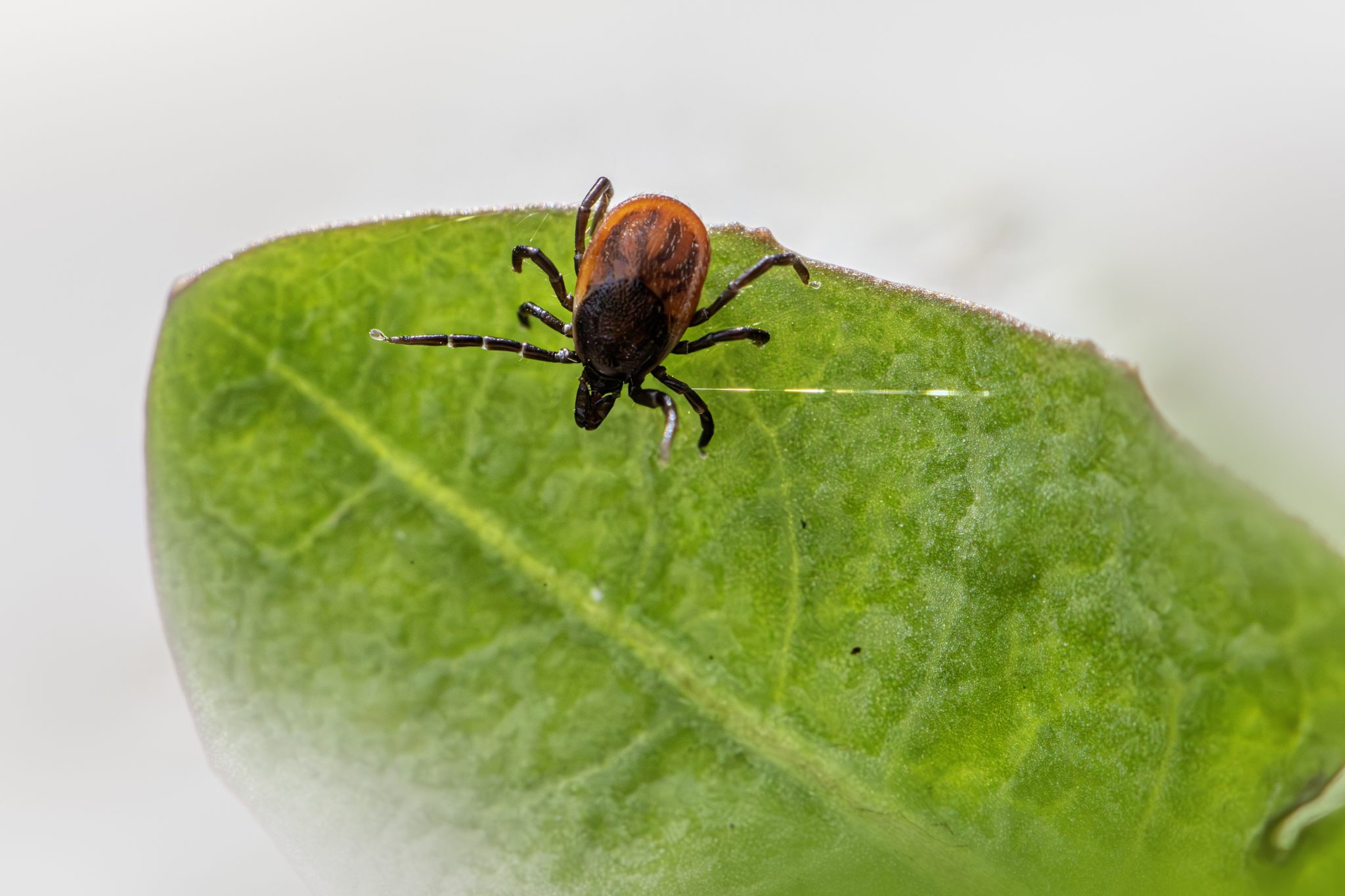🕷️ Castor Bean Tick (Ixodes ricinus)
The Castor Bean Tick, also known as the sheep tick, is one of the most widespread and significant hard ticks in Europe. As a blood-feeding ectoparasite, it plays a major role in the transmission of several diseases to both humans and animals. Despite its small size, it has a big impact on health and ecosystems.
🔍 Identification
- Size:
- Unfed adults: 2–4 mm (males slightly smaller)
- Engorged females: up to 11 mm when fully fed
- Color:
- Unfed: reddish-brown body with a darker scutum (shield)
- Engorged: pale grey to bluish, balloon-like body
- Shape: Flattened, oval-shaped when unfed; bulbous when engorged
- Life stages: Egg → Larva (6 legs) → Nymph (8 legs) → Adult
🌍 Distribution & Habitat
- Range: Common across Europe, parts of North Africa, and western Asia
- Habitat:
- Moist environments: forests, meadows, grasslands, and hedgerows
- Found on low vegetation, waiting for hosts to pass by (a behavior known as “questing”)
🧬 Life Cycle & Behavior
- 3-host life cycle (can span 2–6 years):
- Larva feeds on a small mammal or bird
- Nymph feeds again after molting
- Adult feeds on larger mammals (e.g., deer, dogs, humans)
- Feeding:
- Attaches by inserting its mouthparts into the host’s skin
- Secretes an anticoagulant and adhesive substance
- Feeds slowly over several days before dropping off
⚠️ Disease Transmission
The Castor Bean Tick is a vector of several serious diseases:
- Lyme borreliosis (Lyme disease) – caused by Borrelia burgdorferi
- Tick-borne encephalitis (TBE)
- Anaplasmosis
- Babesiosis
- Q fever and Rickettsial infections (less commonly)
Not every tick is infected, but nymphs and adults are most likely to transmit pathogens.
🧯 Prevention & Safety
- Avoidance:
- Wear long sleeves and trousers in tick-prone areas
- Stick to trails and avoid brushing against vegetation
- Tick checks: Examine body and clothes after outdoor activity
- Removal:
- Use fine-tipped tweezers
- Grasp the tick close to the skin and pull steadily upward
- Clean the area thoroughly
🌿 Role in the Ecosystem
While a nuisance to humans, ticks are part of the food chain and serve as prey for animals like birds and small mammals. They also play an indirect role in regulating animal populations by spreading disease.
🧭 Summary
The Castor Bean Tick (Ixodes ricinus) may be tiny, but its role in public and veterinary health is enormous. Known for its stealthy feeding habits and disease transmission, it’s a parasite that demands awareness and caution—especially for those who enjoy time in nature.
Views: 337
Subscribe to the newsletter:
